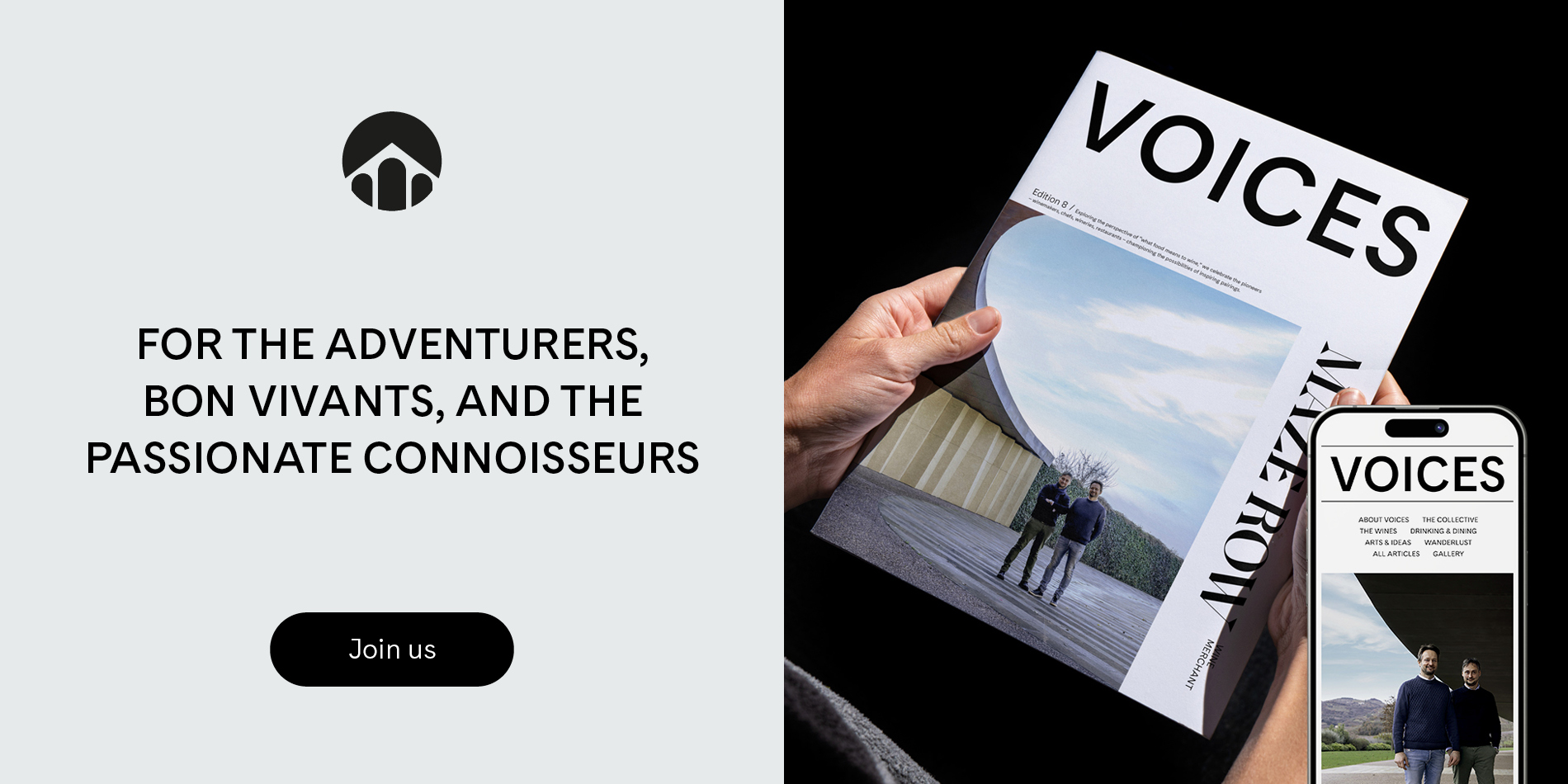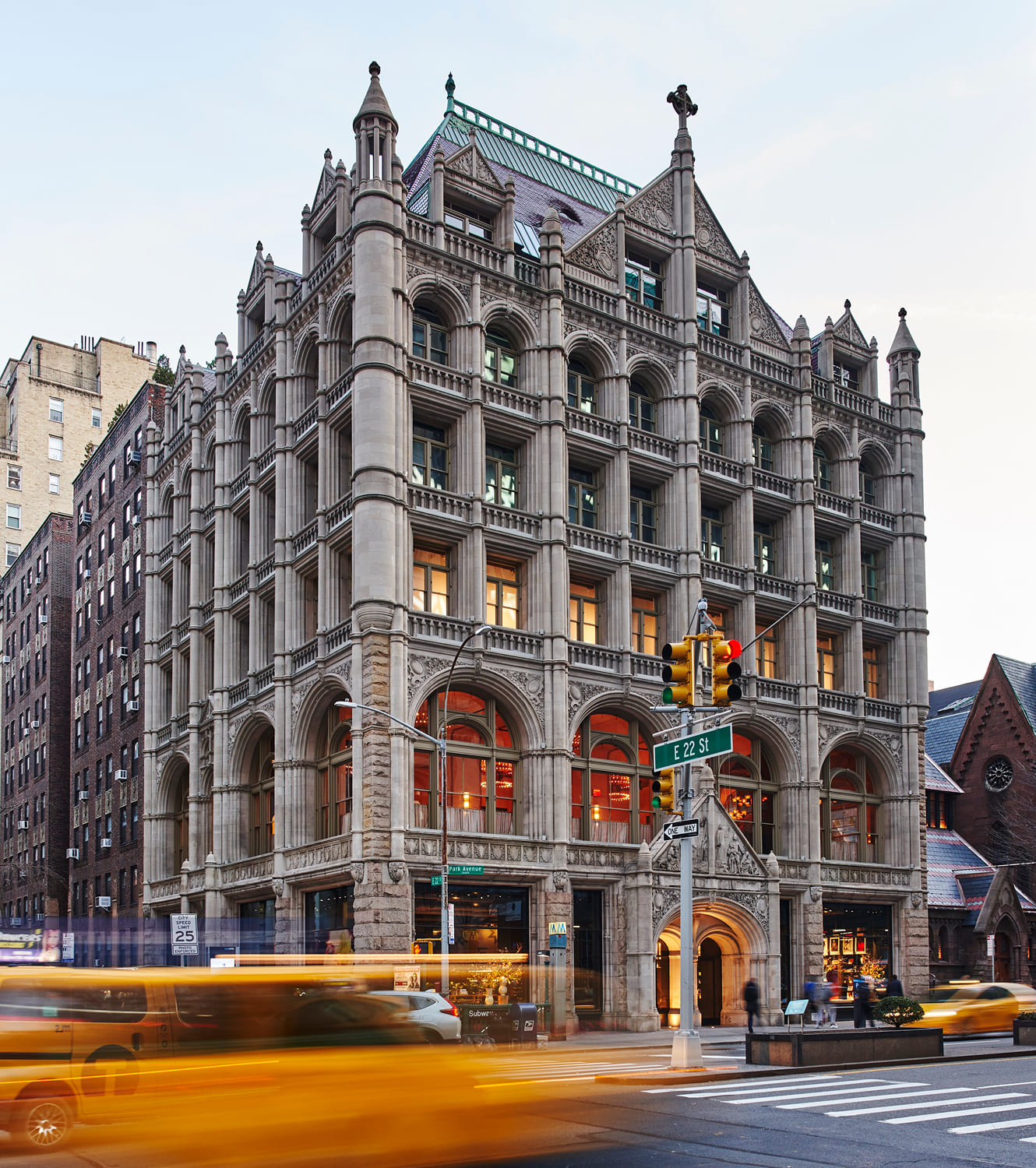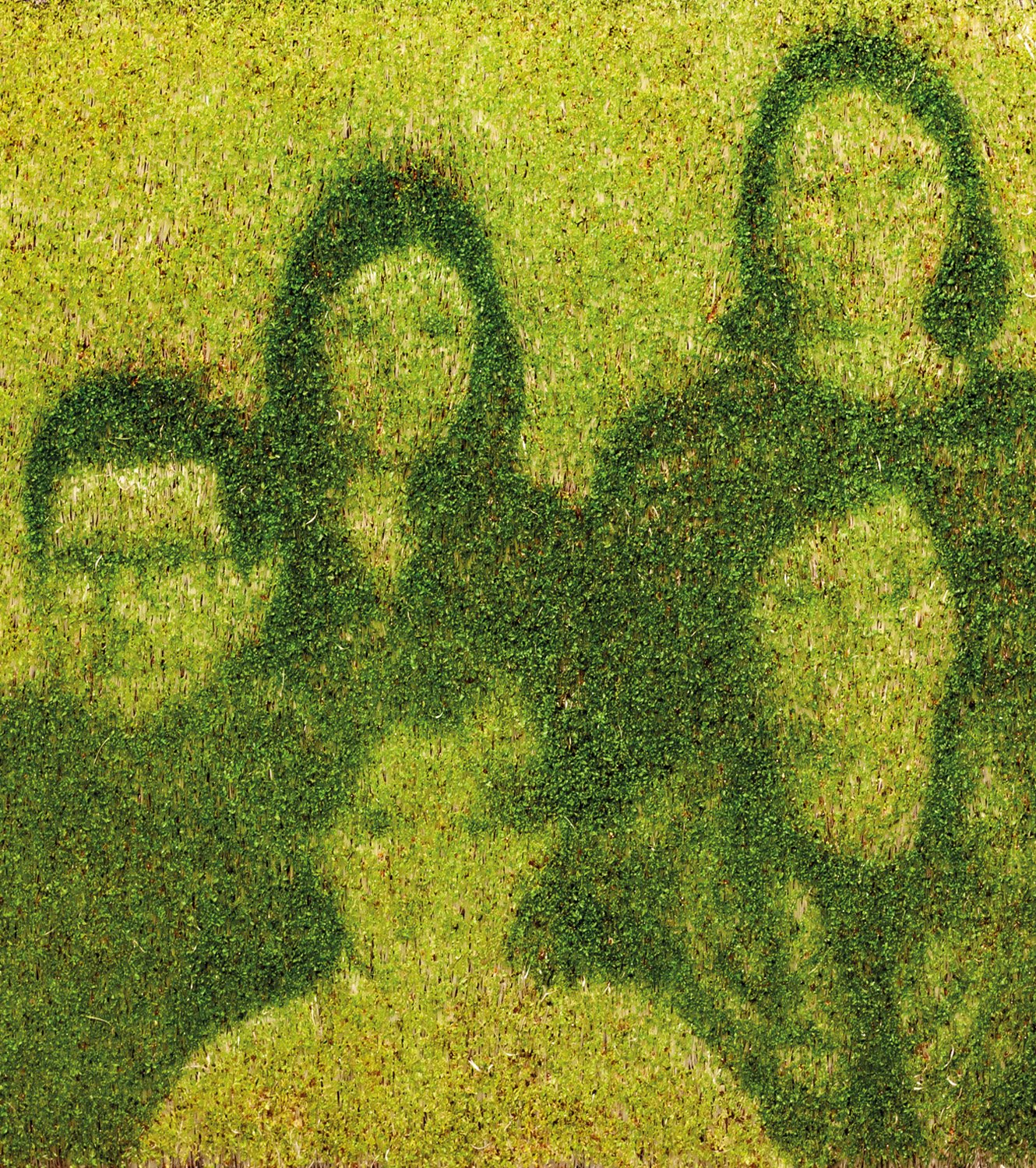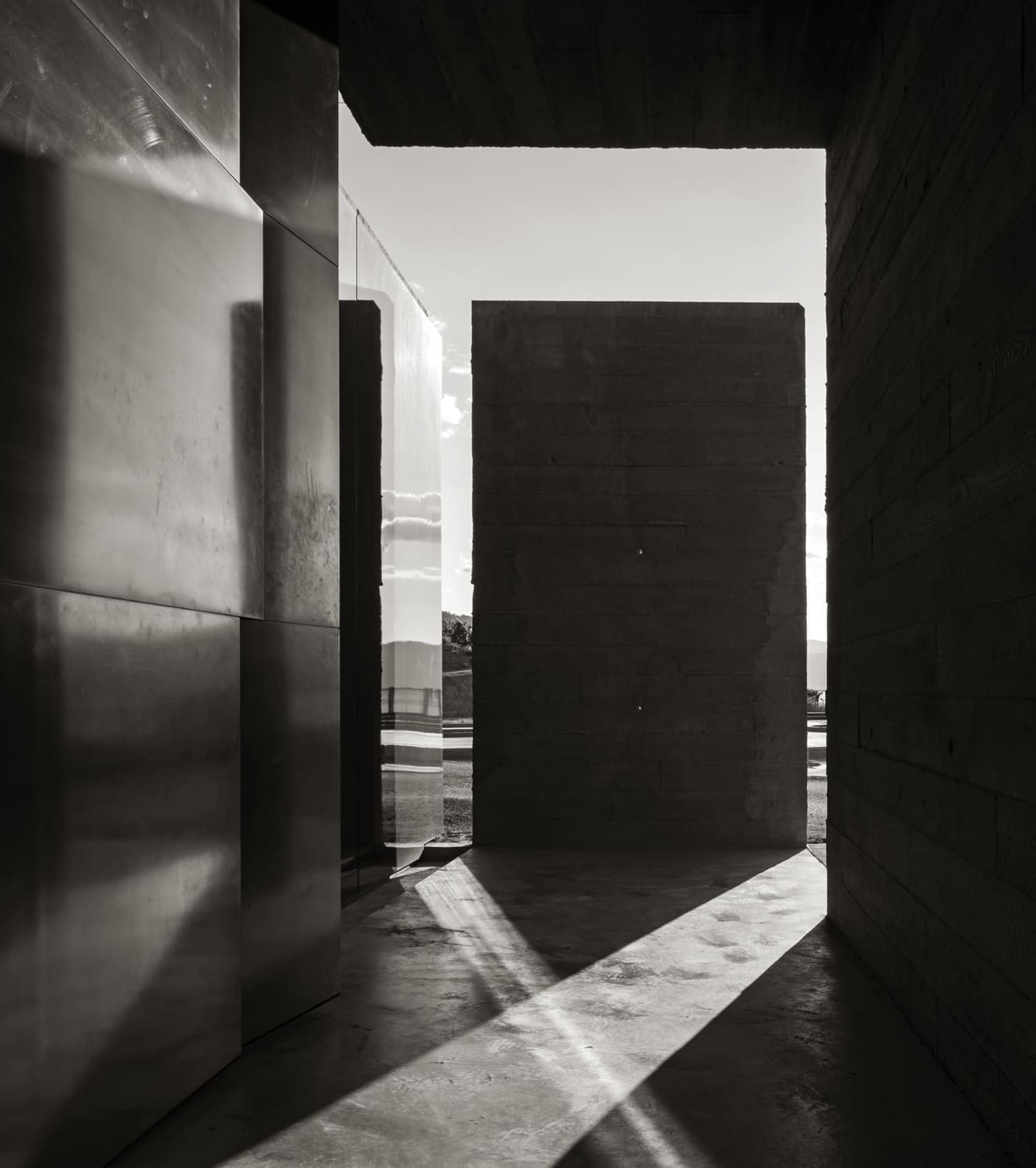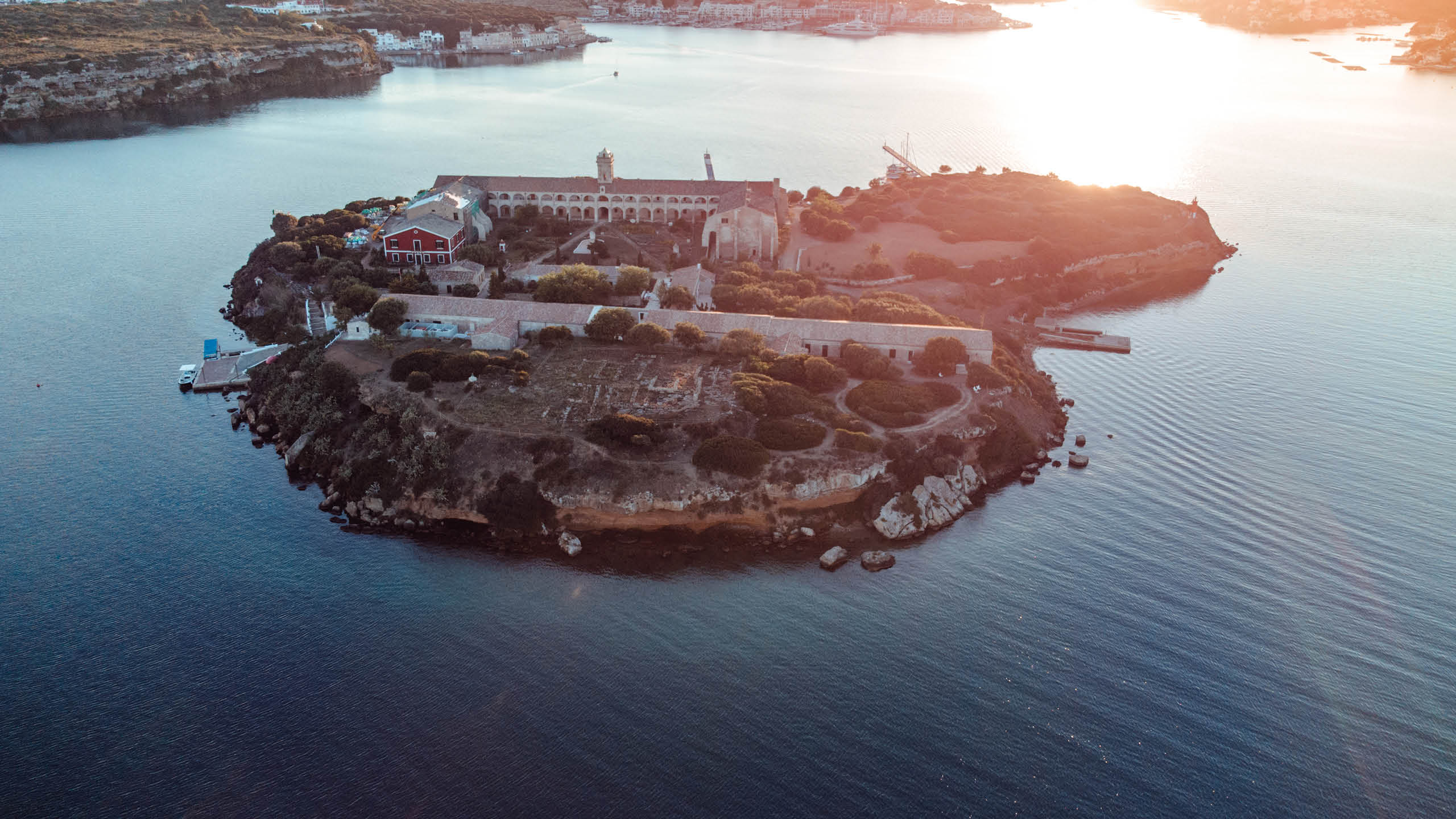
WHERE THE ART IS
Do unusual venues and experimental curations set culture free to be explored in new and exciting ways, and by a wider public? Nargess Banks investigates
Illa del Rei is a tiny spot of land off the Balearic island of Menorca in Spain. A former base for an abandoned military hospital built in the 18th century by the British, and with remains of a Paleo-Christian basilica, it’s been home to an enchanting art space since 2021.
Hauser & Wirth Menorca is a bit of a hybrid. It comprises an art gallery with a workshop for local school kids. The sculpture park is landscaped by the leading figure of the “new perennial” movement Piet Oudolf. The cantina serves seasonal food and locally produced wines. And there’s access to a small beach to cool off in the hot summer months. To get there, you hop on a dedicated yellow catamaran from Mahón harbor, and it’s recommended to time the return trip to coincide with the island’s gorgeous sunsets. Hauser & Wirth Menorca offers a highly visceral art experience.
The Swiss gallery has another such outpost on the rolling hills of Somerset in England. Housed on the site of an old farm, the farmhouse acts as a gallery, gift shop and an open-kitchen restaurant, while the outbuildings are home to resident artists. The surroundings are landscaped by Oudolf with a former Serpentine Pavilion by the Chilean architect Smiljan Radić, hosting events, supper clubs and, in the summer, open-air yoga. Meanwhile, in burgeoning downtown Los Angeles in a former mill, Hauser & Wirth’s LA gallery sits similarly at the intersection of art, architecture, education and entertainment.
These spaces are part of a broader movement within the art world, one that is taking visual art out of the traditional “white cube” gallery space as a way of inviting viewers to experience art differently. Or, as the British sculptor Antony Gormley noted a little while ago on the BBC program Desert Island Discs, it’s important to liberate art from the straitjacket of both the museum and the gallery space.
There are countless other concepts exploring alternative ways to show art, most successfully thriving global art fairs Frieze, Art Basel and the Venice Biennale, as well as more local events such as the latest BAD+ Art Fair (Bordeaux + Art + Design) – inaugurated in 2022 as the first international fair in the wine-growing region.
Meanwhile, during the pandemic, the technology for enabling digital showrooms and virtual auctions matured to a point where physical and digital now run seamlessly. NFTs have further expanded our vision of art and ownership. These multi-vehicles help expose artists to wider audiences and are also excellent storytelling tools and make complete commercial sense for the artist and gallerist.
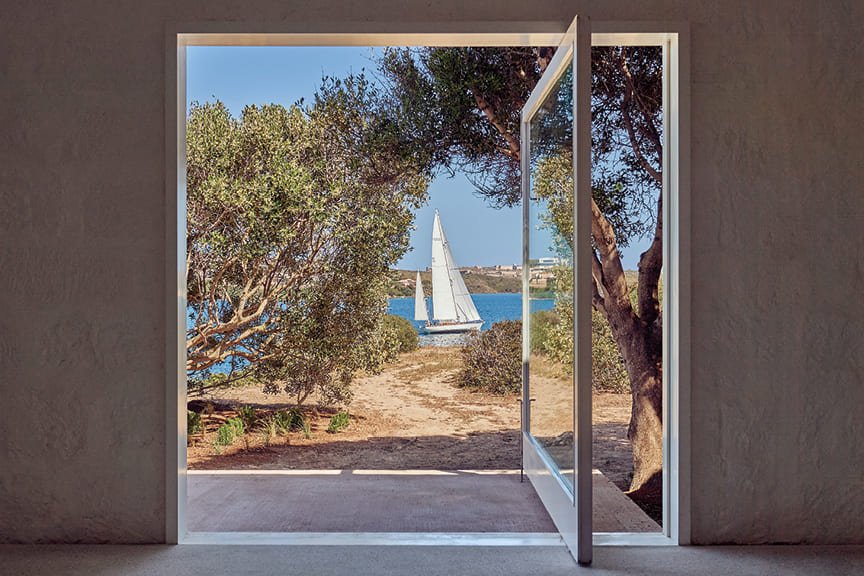

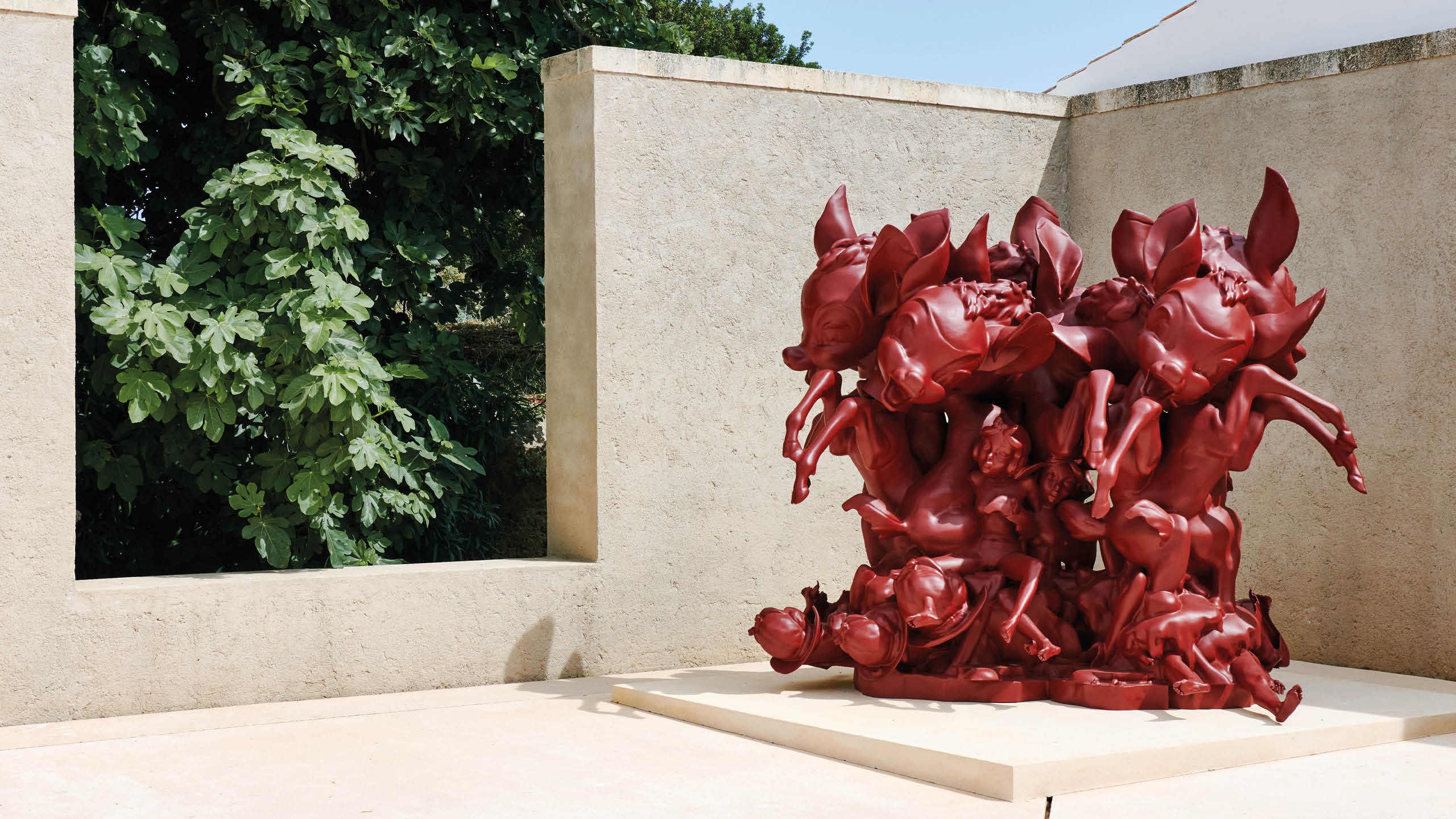
Banner, Hauser & Wirth Menorca on Illa del Rei
Above, views from the Hauser & Wirth Menorca gallery, installation view of Hans Josephsohn's Untitled (1981)
Installation view of Paul McCarthy's White Snow Party (2014) - all courtesy of Hauser & Wirth Menorca
Photography ©Be Creative, Daniel Schäfer, Hauser & Wirth
CURIOUS MINDS
Exciting and challenging environments will naturally inspire exhibiting artists. In 2022, tasked to create a show for Hauser & Wirth Menorca, New York-based artist Rashid Johnson’s “Sodade” became a powerful response to location and the concept of islanders on land with its fair share of movement and migration. Having visited “Sodade,” it’s hard to imagine it having such a visceral impact if shown in a standard urban gallery.
Neil Wenman, Hauser & Wirth partner and global creative director, agrees that an unusual location can impact both the artist and curator’s creative process. “Another benefit is that visitors have mostly traveled here specifically, so they will spend more time and focus on the art,” he says. “It has helped us think about the gallery’s role in educating and inclusivity. Last year we had our millionth visitor to Somerset. It is a whole new audience.”
Inspiration need not be confined to the artist alone. What if a great space and its conceptual offering got the architect, interior designers, and even the chef and sommelier’s creativity pulsing?
This summer Ladbroke Hall opened its doors with the promise of being a community hub for its west London neighborhoods of Notting Hill and Ladbroke Grove. The flagship for Carpenters Workshop Gallery, the 1903 Grade II-listed former home to the Sunbeam Talbot Motor Company is a vast 43,000 square foot space uniting art and design, food and wine, live music, dance and theater. Ladbroke Hall restaurant’s interior is by Italian artist and designer Vincenzo De Cotiis, the garden landscaped by Chelsea Flower Show winner Luciano Giubbilei, and Gambero Rosso’s 2020 “Chef of the Year” winner, Emanuele Pollini, is at its helm.
Beverage director Romain Audrerie feels his wine program needs to reflect the venue’s core values to be accessible and sustainable, but also unique. “We want the wine culture to echo the diversity found in contemporary art, and the wine list to promote eclecticism with labels from lesser-known appellations from the Loire valley or from the minerally-driven Etna volcano in Sicily,” he says. Meanwhile, the building’s heritage site has informed a selection of bottles from more traditional appellations such as Barolo and Burgundy, while also featuring rare vintages from exclusive allocations.
“There is an appetite to look for more experiential spaces,” says Loïc Le Gaillard, who co-founded Carpenters Workshop with Julien Lombrail in 2006. Through their galleries in London, Paris, New York and Los Angeles, the duo has been instrumental in elevating collectible design and blurring the line between art and design. Ladbroke Hall hopes to break similar ground by offering a space that helps us explore culture in more exciting and unusual ways.
Le Gaillard explains, “We want to have a place where we welcome our artists and designers on a non-transactional basis. We want to engage with this beautiful community who have been entrusting us for the past 20 years, over a glass of wine, some pasta, a little theater, rather than the usual commercial setting that can make it extremely boring.”
Notting Hill has a vibrant artistic and musical heritage and a deep sense of pride. A community program is therefore central to Ladbroke Hall’s vision, involving collaborating with local creatives, youth initiatives, and education and mentoring opportunities in art, design, music and dining. Le Gaillard says: “We want to work with the community to ensure we’re not an isolated privileged hub. This is our own little utopian fantasy.”
TREADING A FINE LINE
Not all in the art world are beaming with excitement, though. There is a valid concern that focusing too much on experience runs the risk of turning art into mere entertainment and the gallery into an amusement park. Then again, as inclusive shows such as “Van Gogh: The Immersive Experience” have demonstrated, viewing art in these easily digestible, immersive and Instagramble environments will tease the selfie brigade, but they may also be transformative for some and ignite a passion for art. And that in itself is not a bad thing.
Wenman believes it all depends on the exhibition. “Some are more academic and require much more curatorial expertise than others. Then these new approaches or environments can open up the possibility of engaging with the arts, giving a sense of how art can reflect on different core subject matters, whether sustainability or the human condition.”
Sometimes the journey itself can be instrumental to the experience. “Henry Moore: Sharing Form,” at Hauser & Wirth Somerset last year, focused on the profound impact of Stonehenge on the great British artist. The drive from London went past these otherworldly prehistoric monuments with the experience further enlivening Moore’s sculptures.
“There is room for play, and we should be able to create a space for this,” suggests Wenman. “You can have an underlying conception and communicate big ideas through play and irreverence. It is about experiencing art differently, ways in which we hope to open up the audience to relax and then walk away with a different perspective.”

Hauser & Wirth Los Angeles
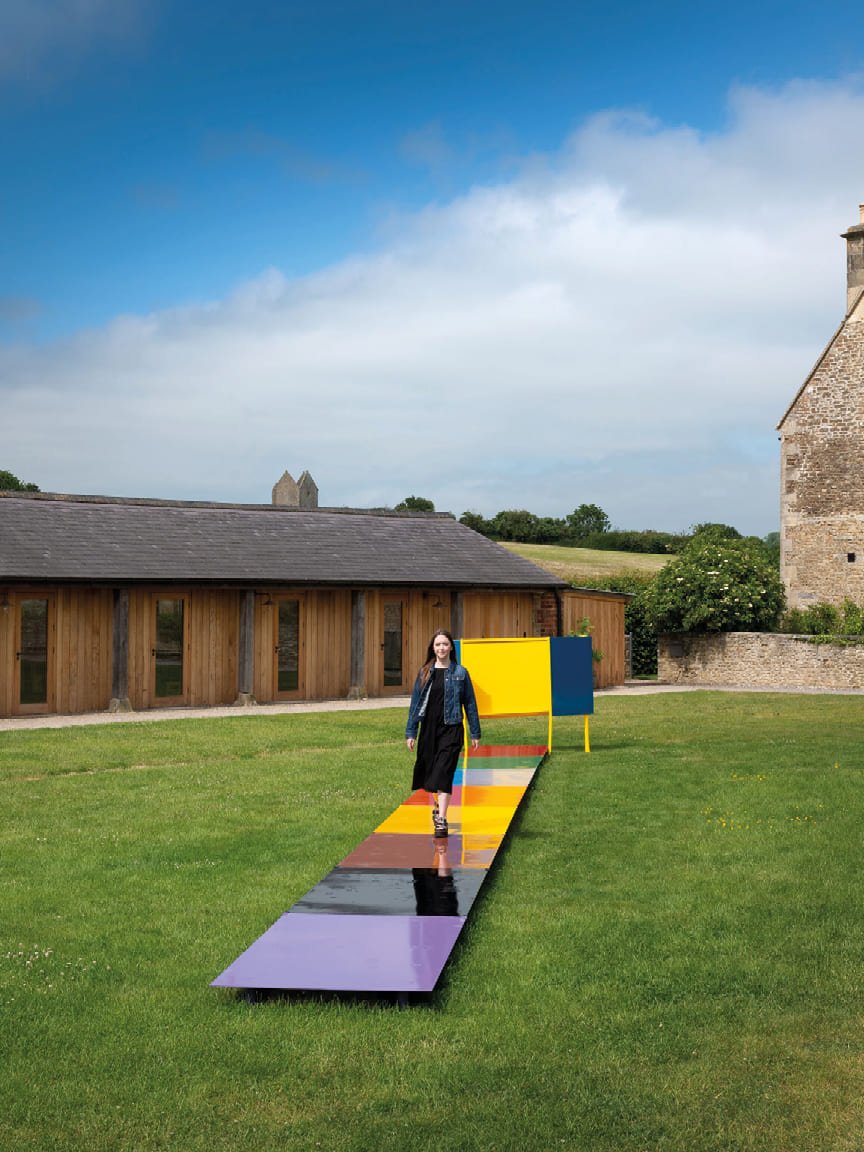
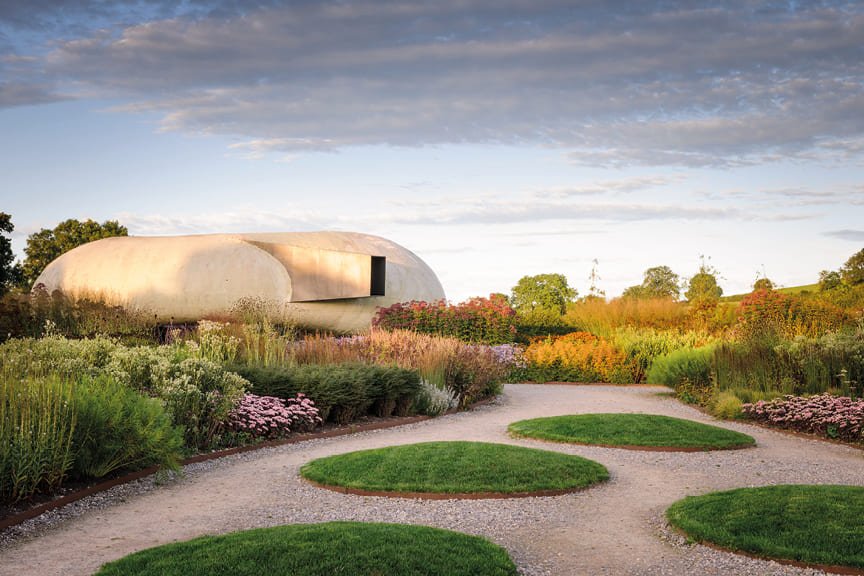
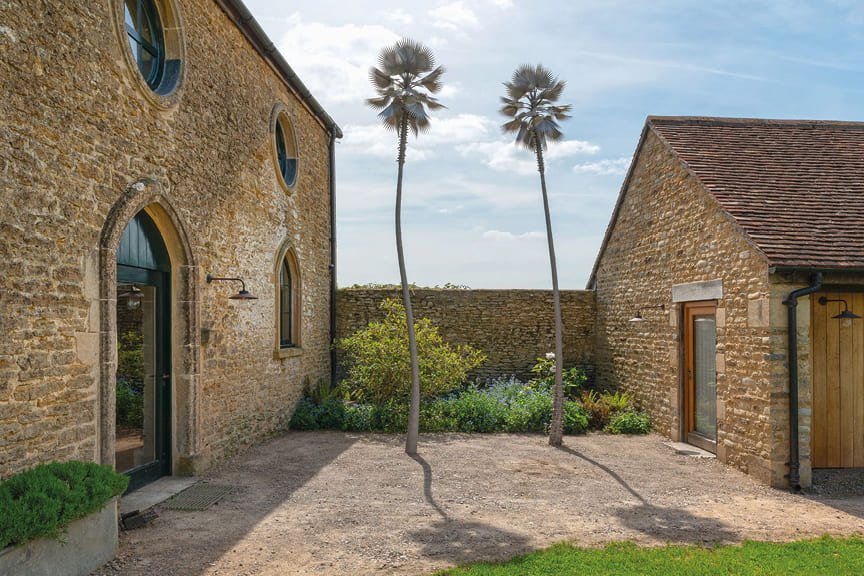
Franz West's Etude de Couleur (1991), David Zink Yi's Neusilber (2018), and Piet Oudolf’s garden with the Serpentine Pavilion by Smiljan Radić (2014), at Hauser & Wirth Somerset
Photography ©Elon Schoenholz, Archiv Franz West, Estate Franz West, David Zink Yi
All photography, courtesy of the artists and Hauser & Wirth
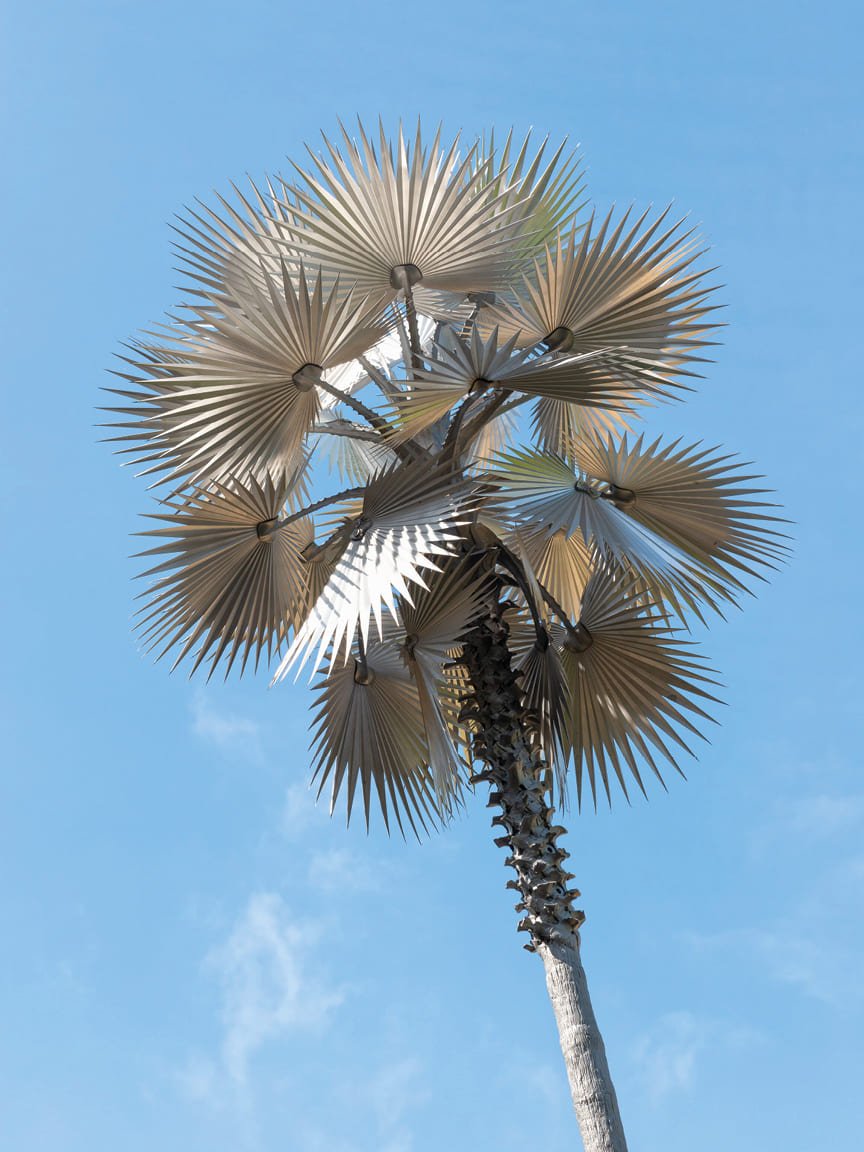
“There is room for play, and we should be able to create a space for this”
Neil Wenman, Hauser & Wirth partner and global creative director
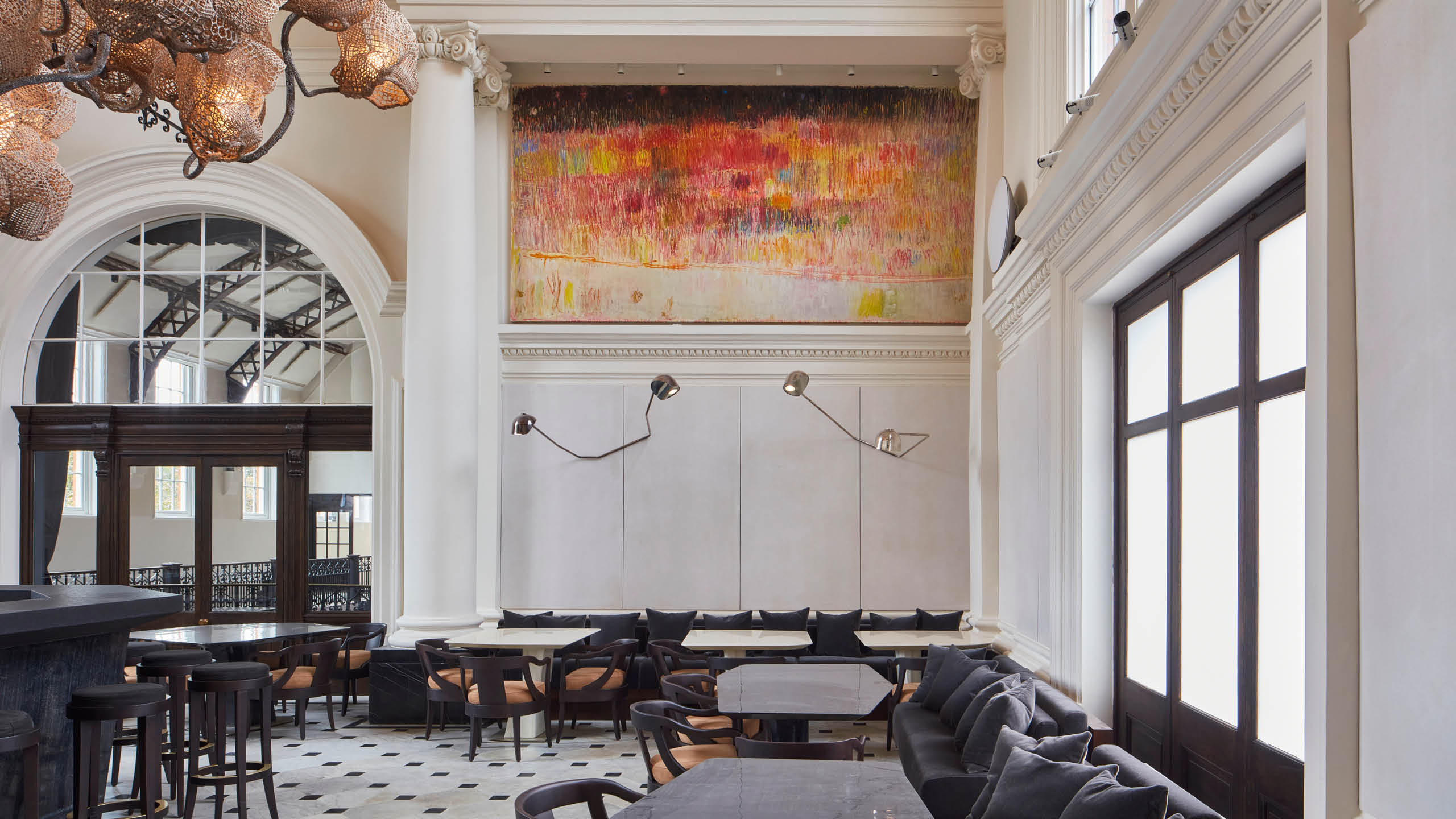
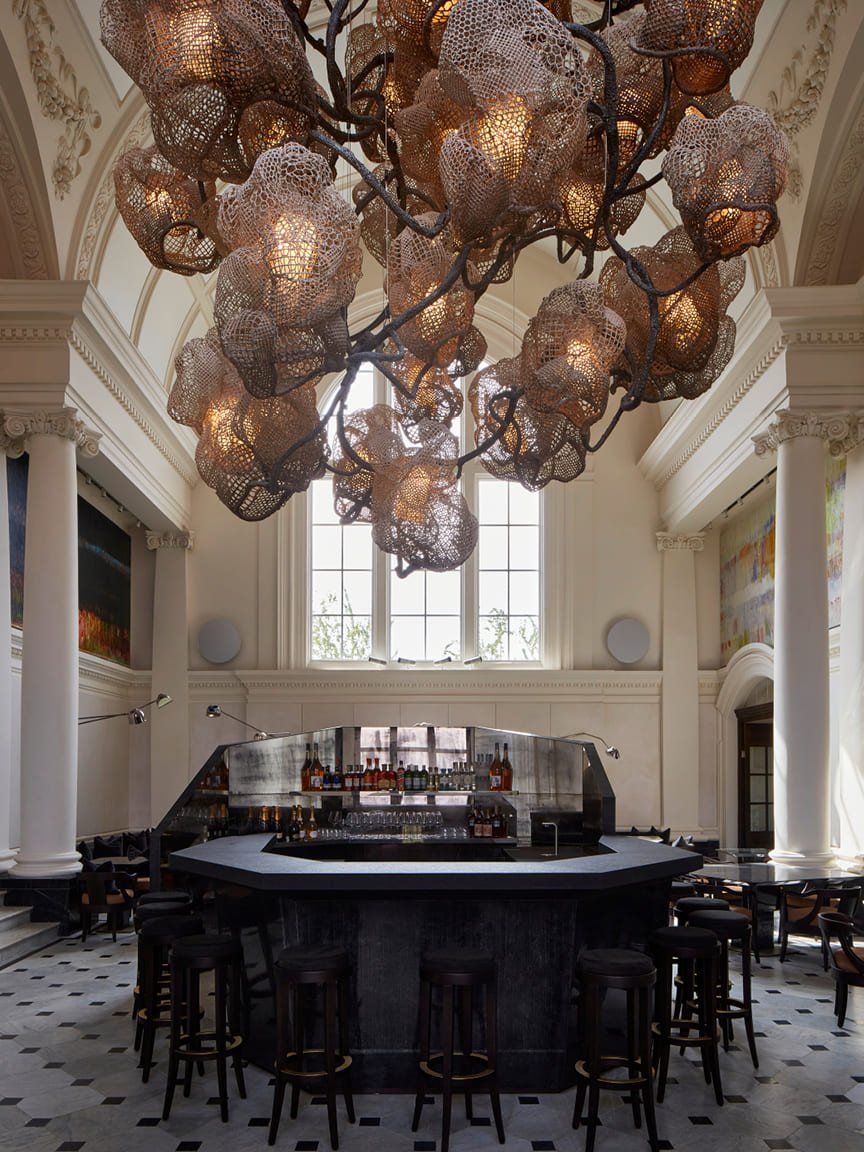
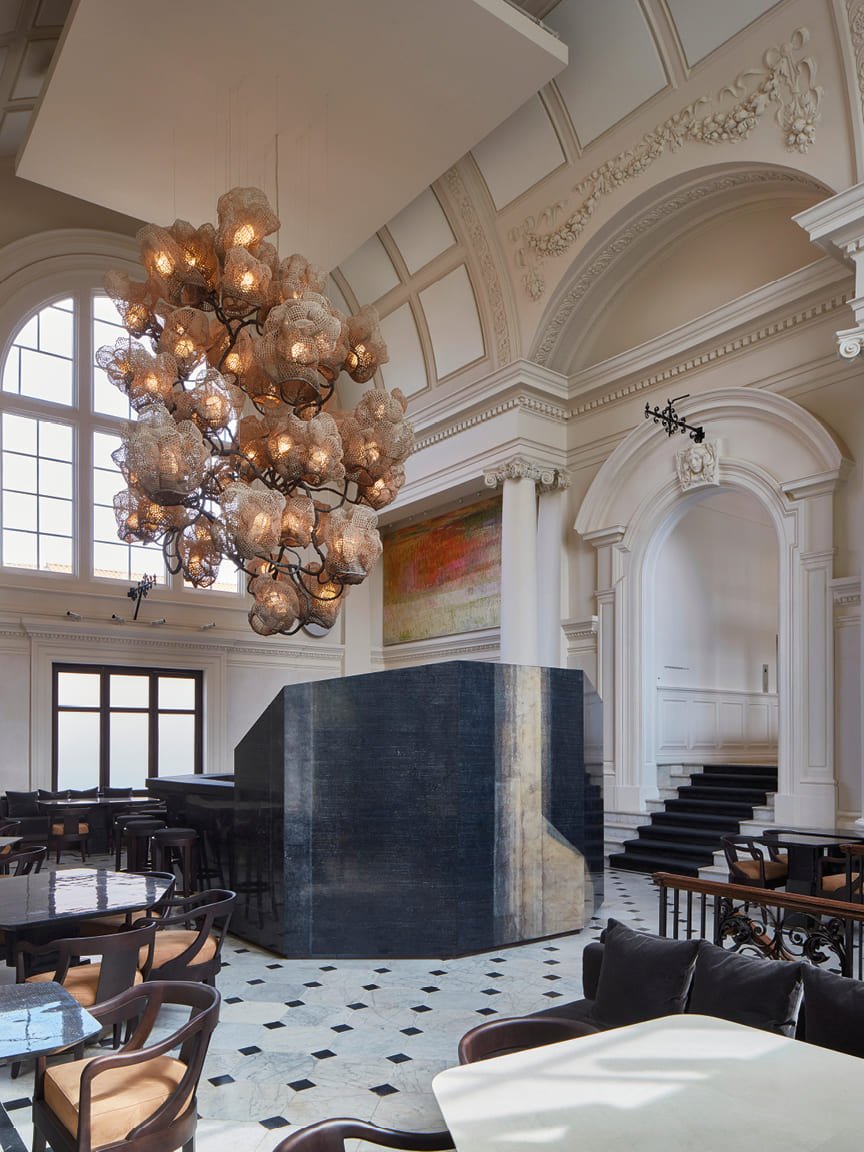
The restaurant at Ladbroke Hall in London, designed by Vincenzo De Cotiis featuring a chandelier by Nacho Carbonell and site-specific artwork by Christopher Le Brun
Photography ©Mark Cocksedge
We recommend
NEW WAYS OF SEEING
Can photography and image making alter the way we see the world and open our eyes to new possibilities? Tom Seymour visits two shows to see how artists are using their lens for positive change
DOORS OF PERCEPTION
John Irwin delves into the art of wine talk and explores how our individual cultural backgrounds influence how we see the world – and taste it
PLANTING SEEDS
Almudena Romero questions production and consumption with her ephemeral organic photography. Nargess Banks sits down with the Spanish artist
THE ARCHITECTURE OF WINERIES
Can architecture fundamentally alter our wine experience? Some of the world’s finest wineries believe that building design can, as Jonathan Bell takes a tour
